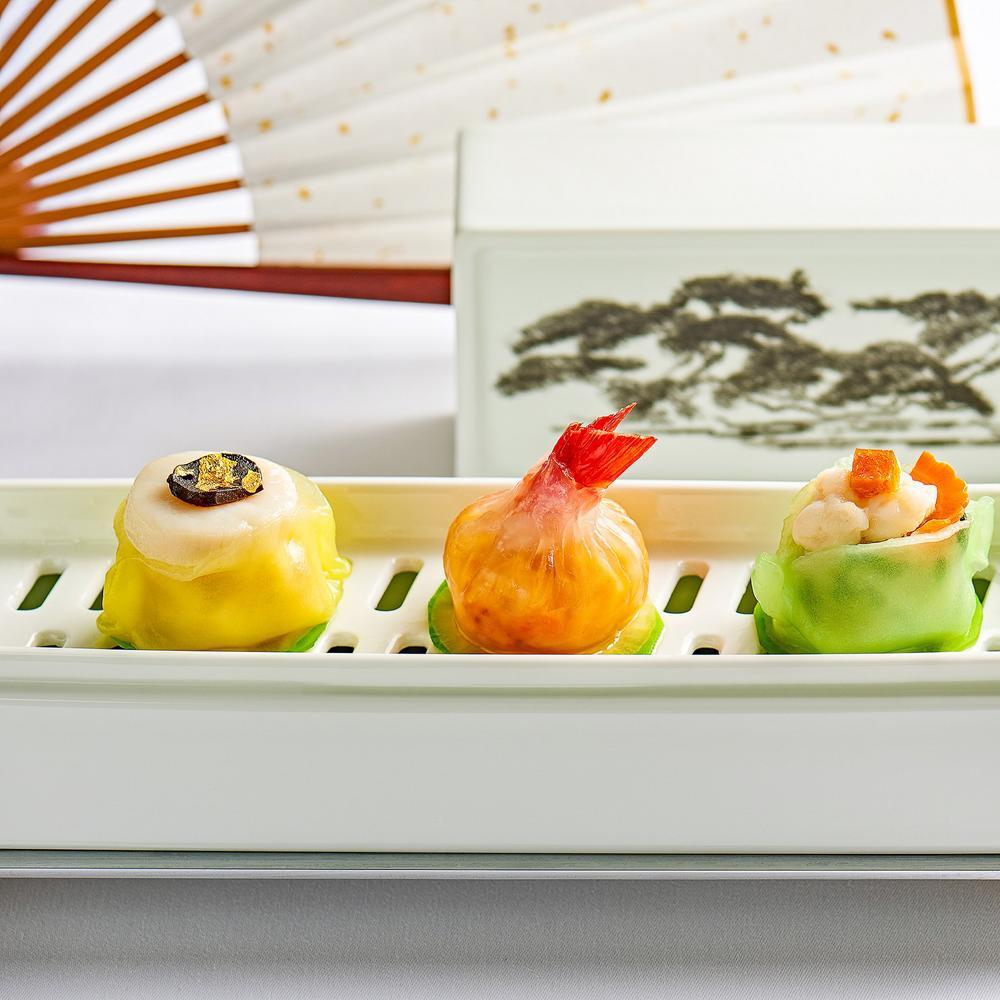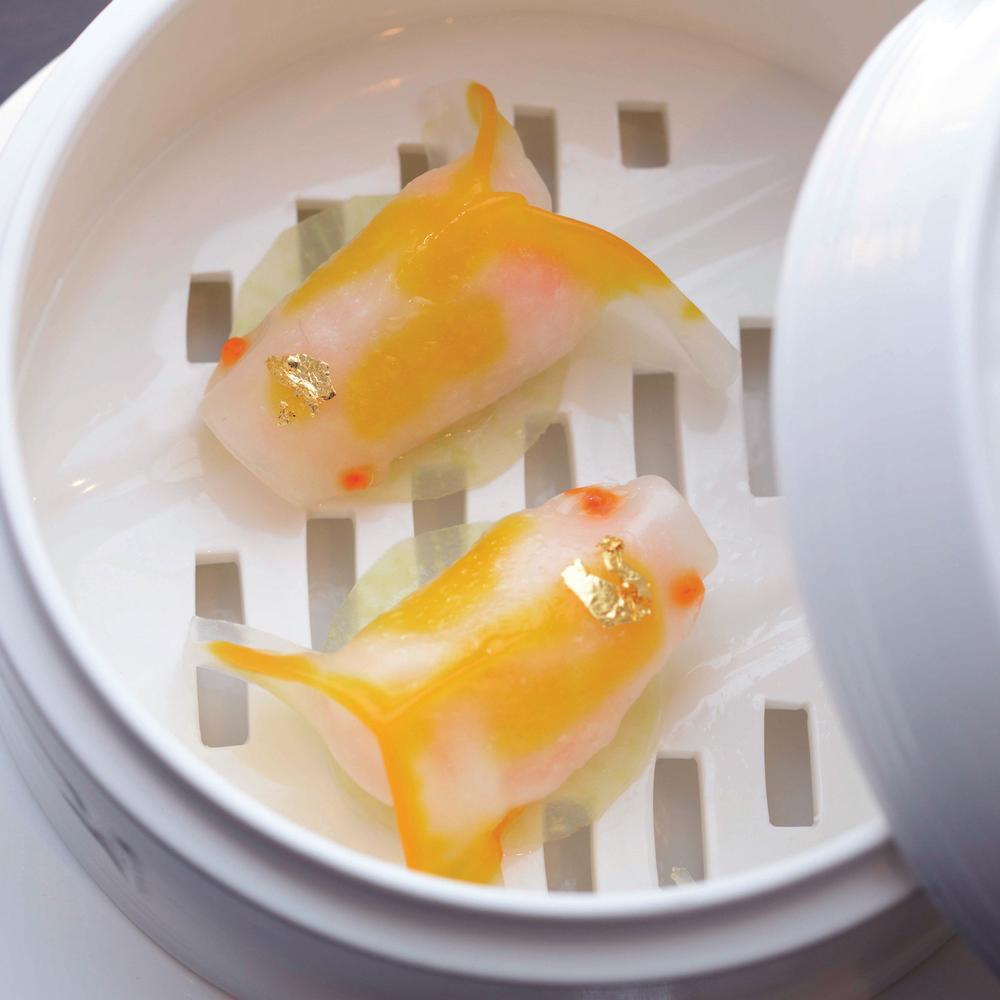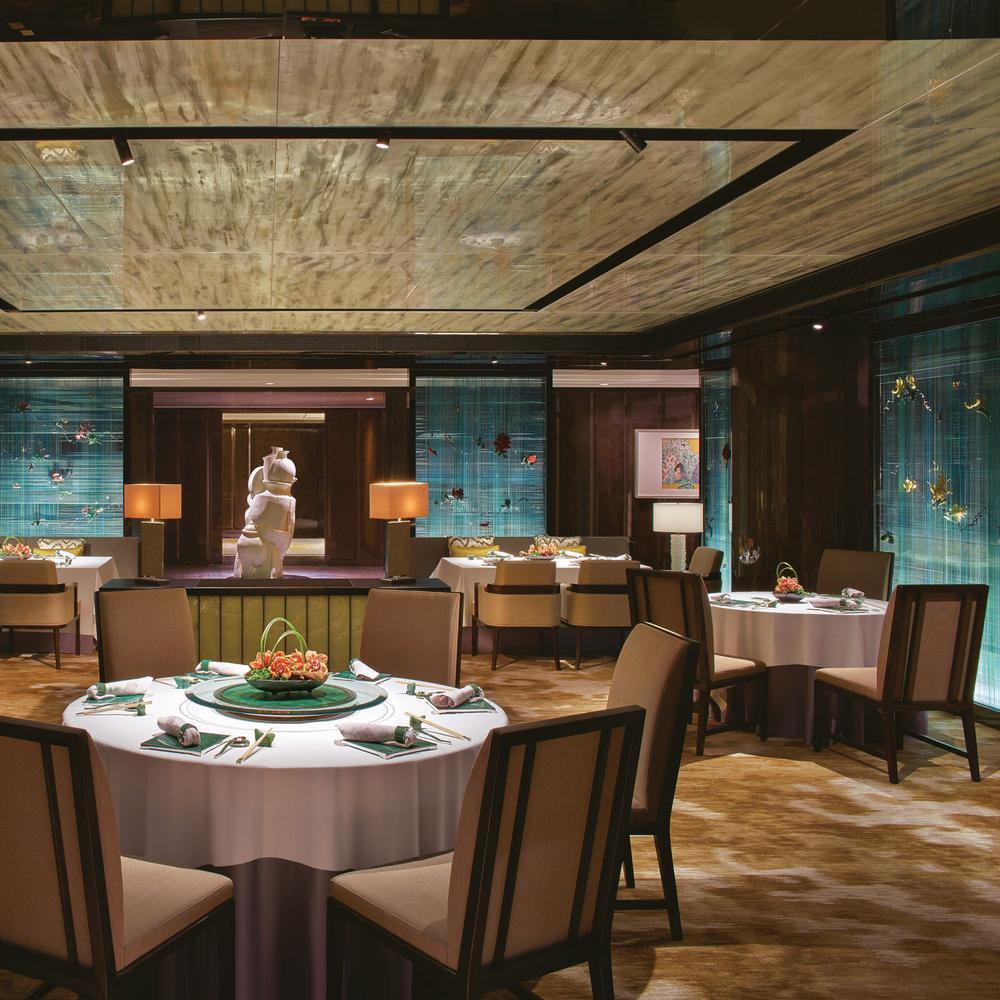A slightly edited version of an article first featured on Passion Passport in February 2016, as part of the #PassportToAsia experience, sponsored by Cathay Pacific.

Nicola Canuti, the jovial head chef at Yan Toh Heen, appears in the lobby of the adjoining Intercontinental Hotel with a smile as wide as his face and a hat so tall it's hard to ascertain his real height. “Are you excited?” he asks, but doesn't wait for an answer.
Leading us briskly through a maze of private corridors, he brings us into the demonstration area of the kitchen where we will observe the craft of making dim sum. This is his kingdom, and his power here is absolute; one low grunted command and a pile of dirty aprons is immediately vanished from a corner.
Along one side of the room, a long stainless steel surface sets the stage for our lesson. Pans stacked like shipping containers await the day’s cargo, gleaming pristinely under the glaring overhead lights. To the side is a polished field of fire pits, where woks will soon heave with the vibrant colors of peppers and shrimp so fresh that to eat them feels almost rude.
Looking around, I notice that we seem to be getting younger by the day here at the Intercontinental. The familiar toll of crossing multiple time zones is leaving our faces. Our eyes that were yesterday glazed with a need for sleep are now curious and bright, with flashes of an almost child-like awe as the dim sum masters squeeze, pinch, poke and cajole their creations into flawless tiny monuments to a seven centuries-old art.

We're introduced to a father and son working side by side at the woks. The son says he has been making dim sum for forty years, and his father has stopped counting. Their hands are almost blurs as they work. A long roll of rice dough becomes six perfectly flat pancakes in the blink of an eye. When its our turn to try and replicate their work, my fingers become sausages, thick with unskilled ambition. “That looks… special,” chides Canuti about my roommate’s efforts. I blush with relief that he hasn’t yet noticed my own abominations, sagging sadly on the plate at my hip.
If anything my efforts only get worse throughout the lesson, but later, when a certificate saying ‘PASSED’ is pressed into my hands, for a second I feel like I actually deserved it. The Chinese community comes together around this food, executive chef Lau Yiu Fai tells us. “Chinese society is very inside, not outside. So food is a good opportunity for things to open.” That’s a philosophy that the Passport To Asia team can categorically endorse. Our conversations over food have helped to break down the walls of shyness and form the strong connections that will long outlast the trip itself.
After the lesson, the masters gleefully pose for photos and shake every hand before we move onto another round of eating. Actually, eight rounds. A flurry of chopsticks and excited chatter rises up from our tables as each plate of food arrives from the kitchen. I’m no food reviewer. To attempt to do even a fraction of justice to this meal would be an affront to all the pros who’ve come before me to fumble for superlatives with which to describe it. Just know this: two Michelin stars do not come easy, and these were well earned.

Incredibly, there was even more food to come later in the evening when we met with some local entrepreneurs. Hearing the stories of people who are working to put Hong Kong on the world map as a creative hub on par with London or New York, was genuinely inspiring. I came away feeling motivated, not to open a restaurant like May or to design my own fashion range like Michelle, but to spread the word about the awakening of a city that’s too-often overlooked on the global scale.
As Lau Yiu Fai reminds us, dim sum translates to “a little bit of heart”. And as we are learning so well here, far from home, even just a little goes a long way.
Photos from The Michelin Guide. Note: The Intercontinental Hong Kong closed in 2020 and will reopen later in 2022 as the Regent Hong Kong.

